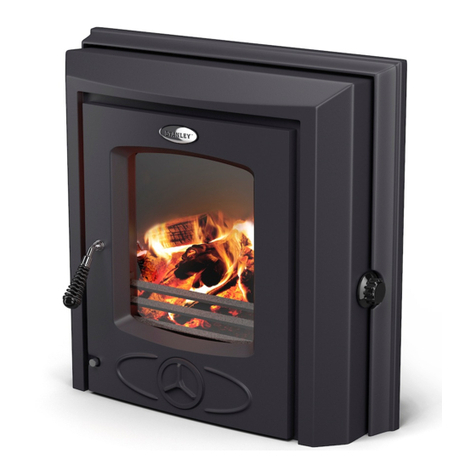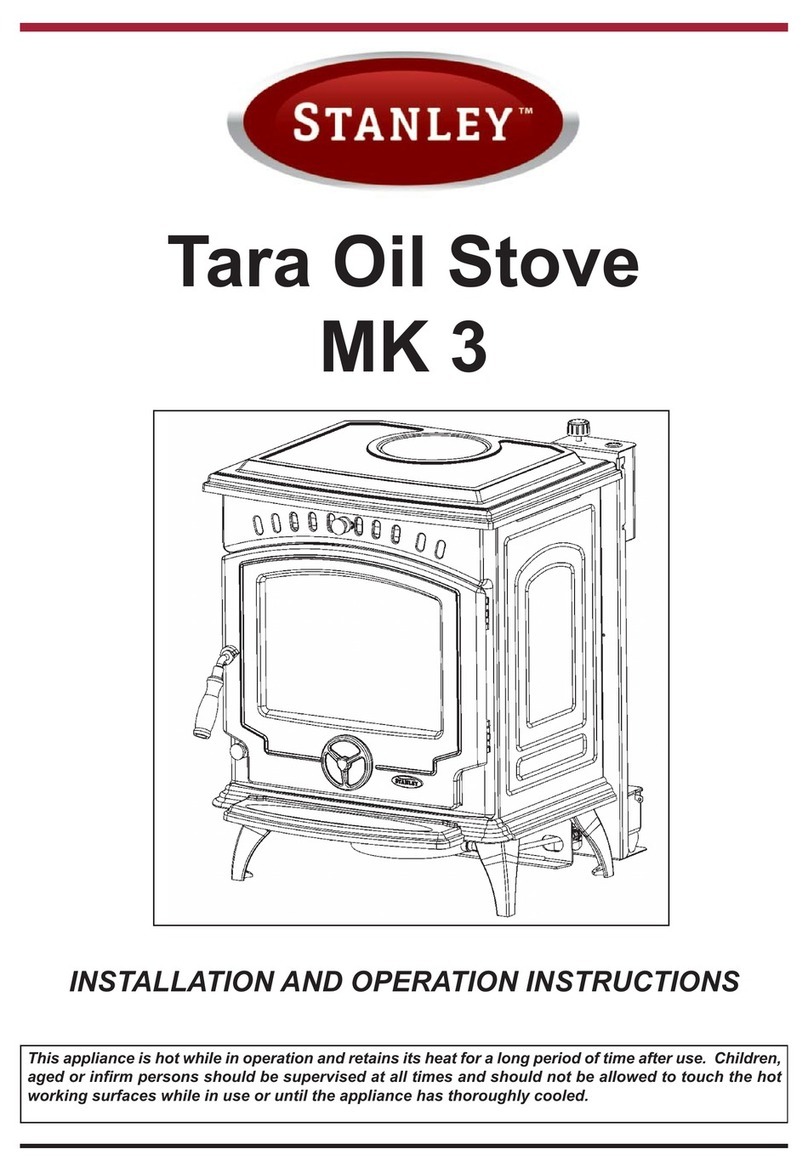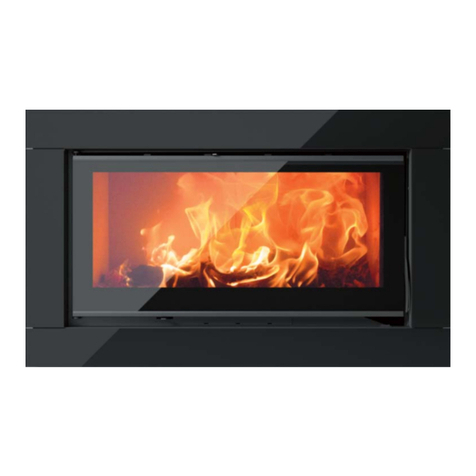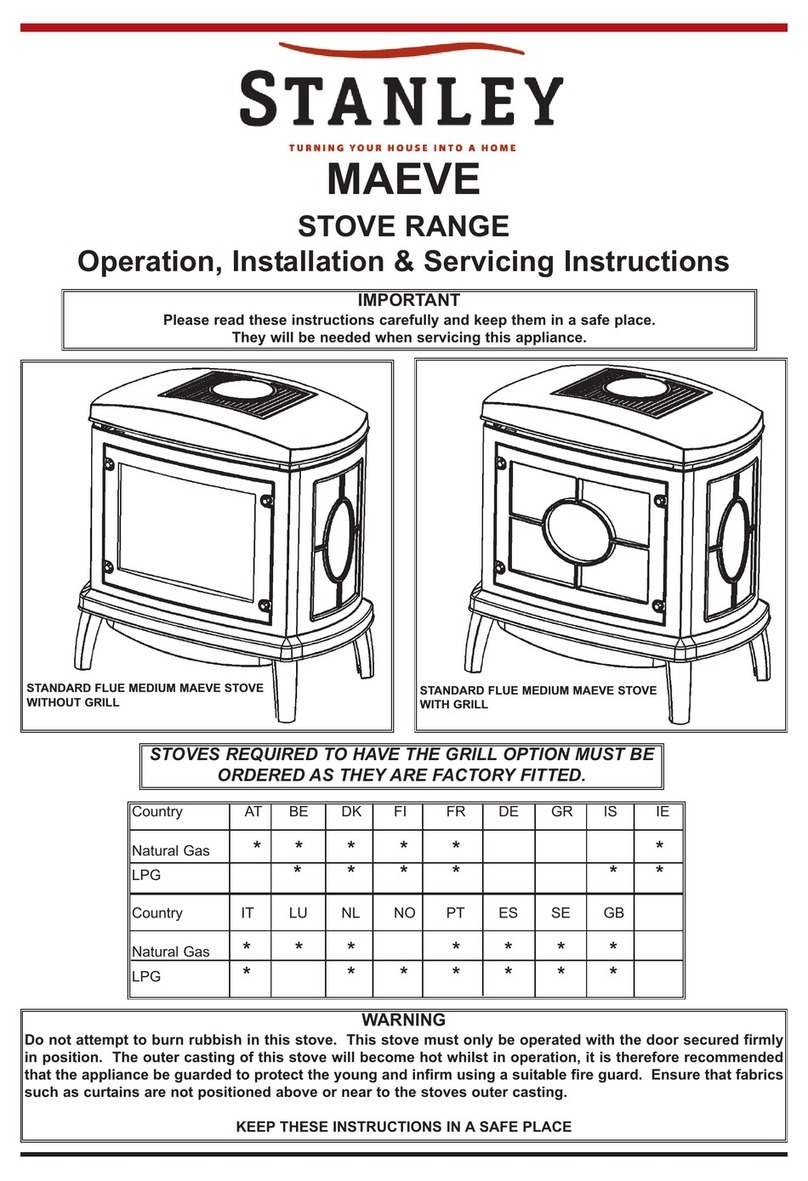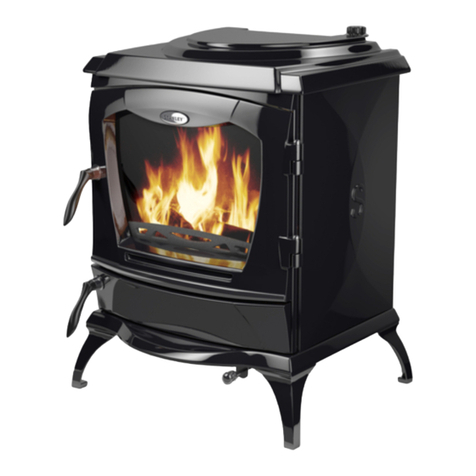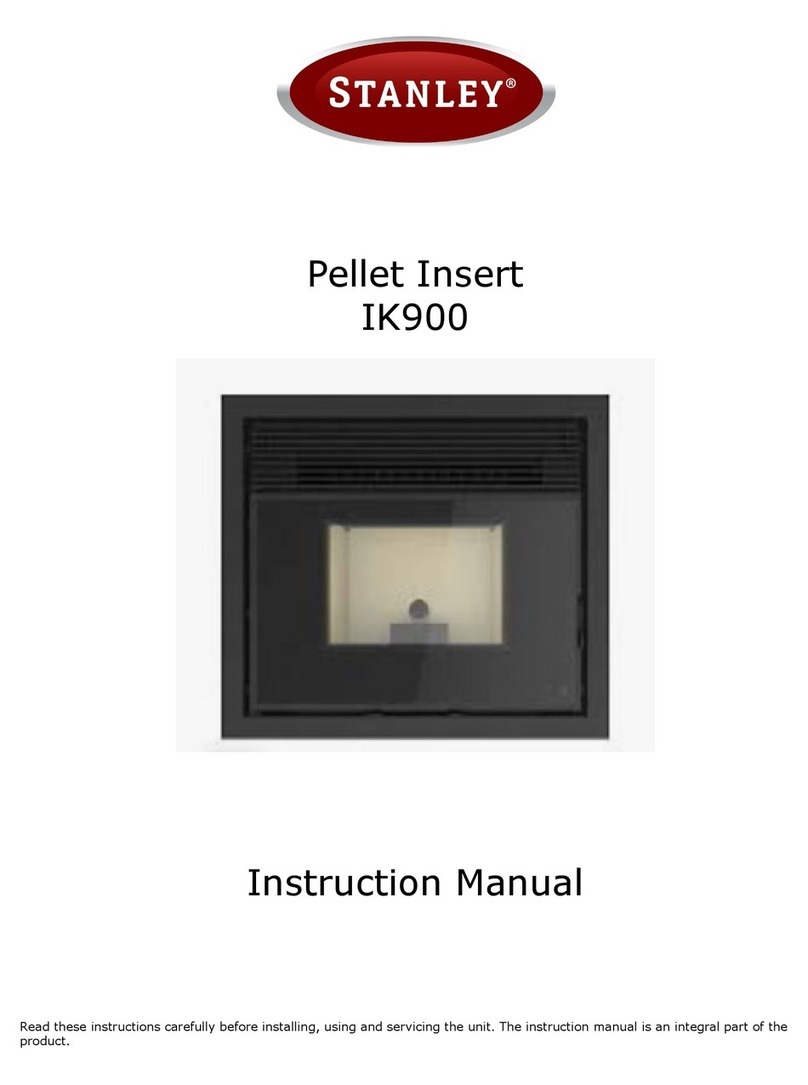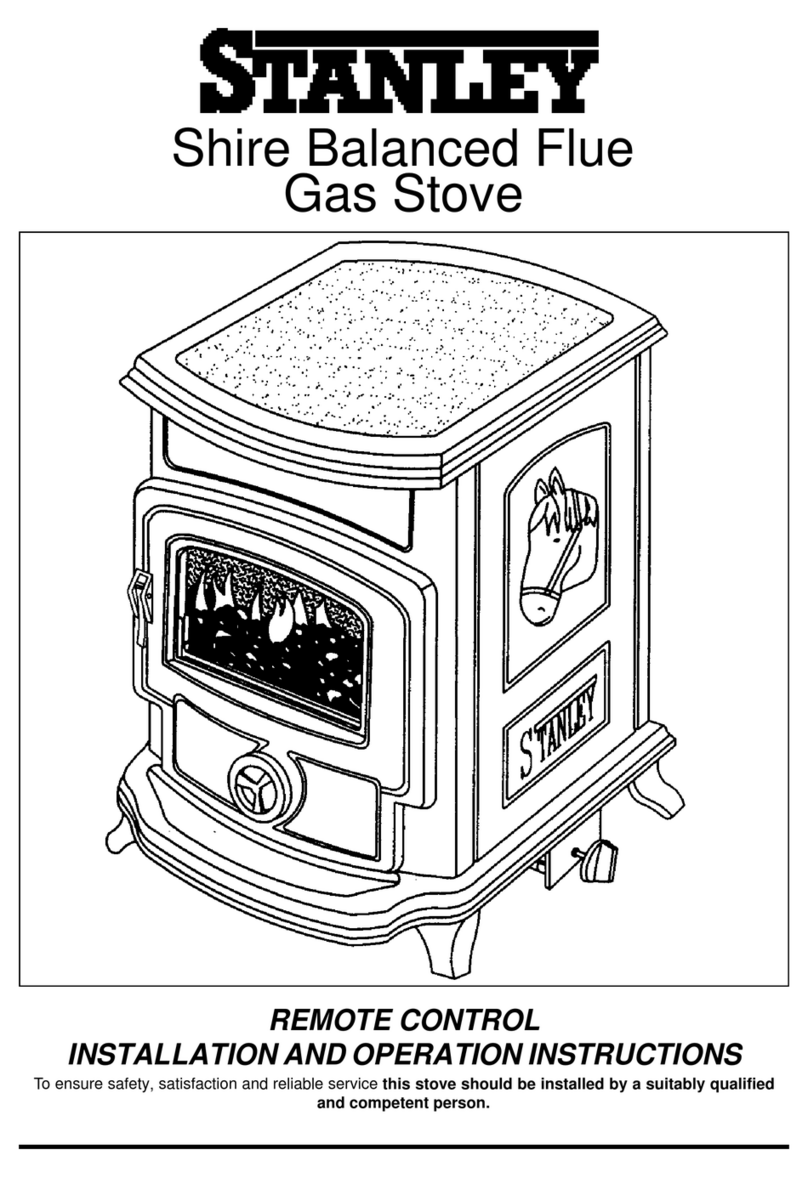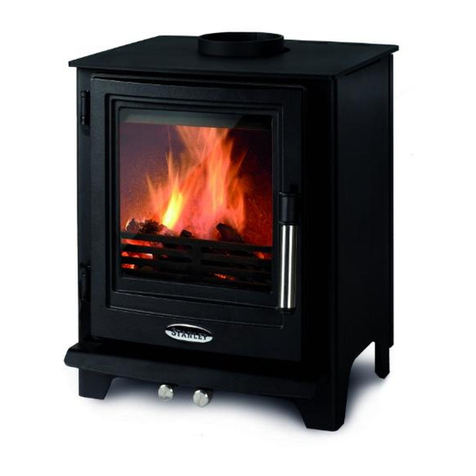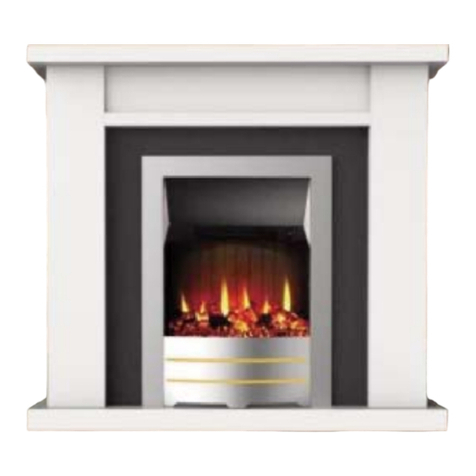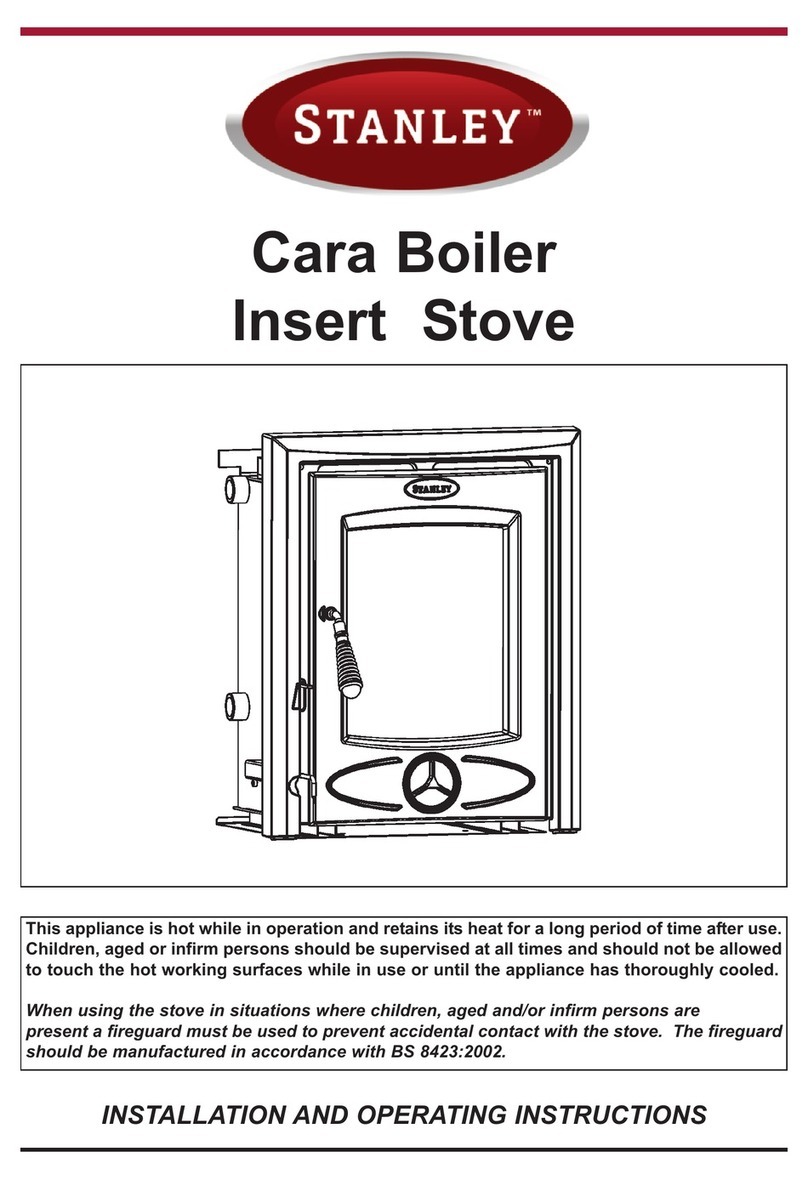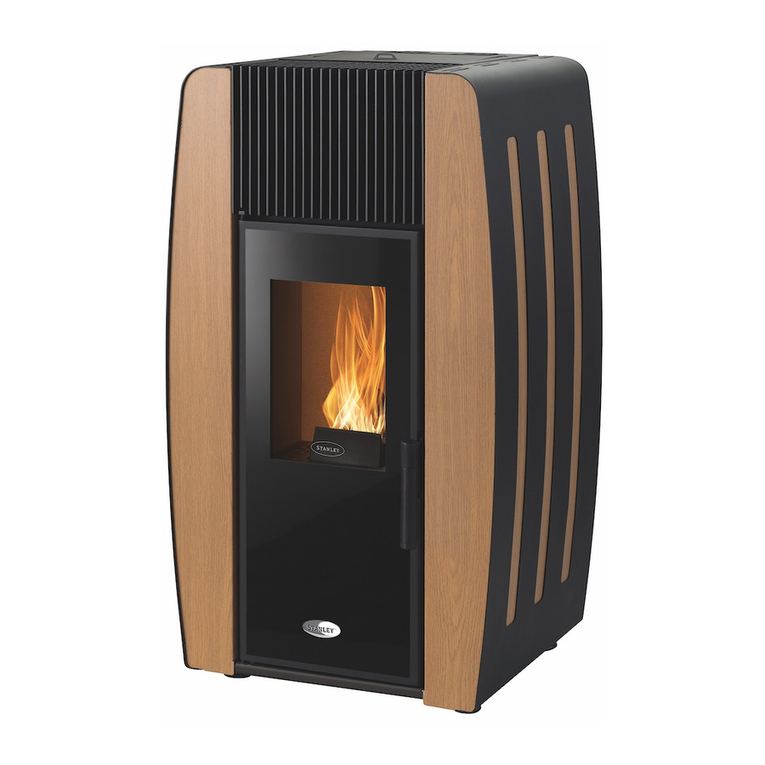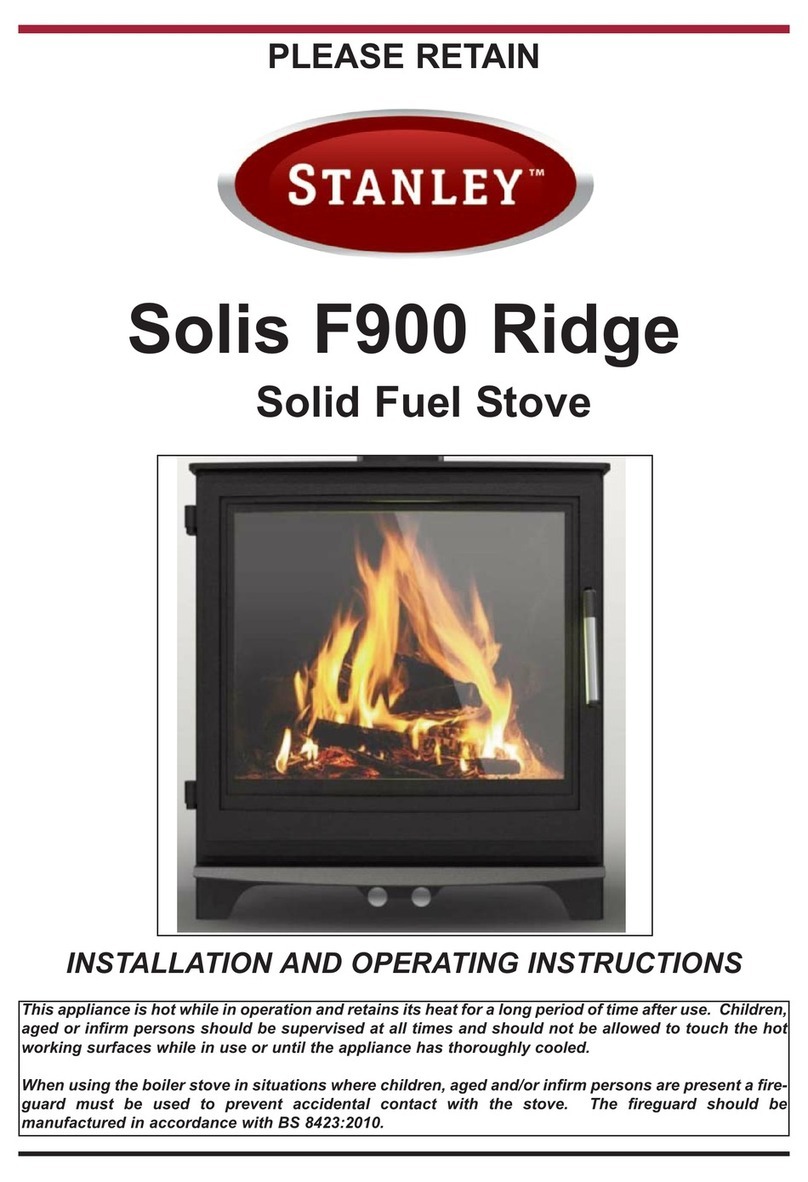6
CHIM EY
The Erin is a radiant room heater and must be con-
nected to a chimney of the proper size and type.
The chimney must have a cross-sectional area of at
least 30 square inches 18150sq. mm or a diameter
of at least 6” (150mm). It is best to connect to a
chimney of the same size, as connection to
a larger size may result in a somewhat less draught.
Do not connect to a chimney serving another appli-
ance. Minimum chimney height 15’ (4.5 meters)
from floor on which stove is installed. An existing
masonry chimney should be inspected and if neces-
sary repaired by a competent mason. The stove
must be connected to a chimney with a minimum
continuous draft of .06” wg (15 Pascals). Poor draft
conditions will result in poor performance.
Chimneys for use with solid fuel appliances should
be capable of withstanding a temperature of 1100oC
without any structural change which would impair
the stability or performance of the chimney.
If the stove is fitted in place of an open fire then the
chimney should be swept again, one month after
installation, to clear any soot falls which may have
occurred due to the difference in combustion
between the stove and the open fire.
BS EN 15287-1:2007, Design Installation and
Commissioning of Chimneys; Part 1: Chimneys for
non-roomsealed heating appliances should be used.
VE TILATIO & COMBUSTIO AIR REQUIRE-
ME TS
It is imperative that there is sufficient air supply to
the stove in order to support correct combustion.
The air supply to this appliance must comply with
B.S. 8303: Part 1. The minimum effective air require-
ment for this appliance in Ireland is 65cm2. In the
UK the air requirement is 60.1cm2if a flue draught
stabiliser is used or 29.2cm2without.
If there is another air using appliance fitted in the
same or adjacent room, it will be necessary to cal-
culate additional air supply.
All materials used in the manufacture of air vents
should be such that the vent is dimensionally stable
and corrosion resistant.
The effective free area of any vent should be ascer-
tained before installation. The effect of any screen
should be allowed for when determining the effective
free area of any vent.
Air vents direct to the outside of the building should
be located so that any air current produced will not
pass through normally occupied areas of the room.
An air vent outside the building should not be locat-
ed less than the dimensions specified within the
Building Regulations from any part of any flue termi-
nal. These air vents must also be fire proofed as per
Building Regulations.
Air vents traversing cavity walls should include a
continuous duct across the cavity. The duct should
be installed in such a manner as not to impair the
weather resistance of the cavity.
Joints between air vents and outside walls should be
sealed to prevent the ingress of moisture. Existing
air vents should be of the correct size and unob-
structed for the appliance in use.
If there is an air extraction fan or other air using
appliance fitted in the room or adjacent rooms where
this appliance is fitted, additional air vents will be
required to eleviate the possibility of spillage of prod-
ucts of combustion from the appliance/flue while the
fan is in operation.
Where such a installation exists, a test for spillage
should be made with the fan or fans and other appli-
ances using air in operation at full rate, (i.e. extrac-
tion fans, tumble dryers) with all external doors and
windows closed.
If spillage occurs following the above operation, an
additional air vent of sufficient size to prevent this
occurrence should be installed.
PERMA E T AIR VE T
The stove requires a permanent and adequate air
supply in order for it to operate safely and efficiently.
In accordance with current Building Regulations the
installer will have fitted a permanent air supply vent
into the room in which the stove is installed to pro-
vide combustion air. This air vent should not under
any circumstances be shut off or sealed.
Extr ctor F n
There must not be an extractor fan fitted in the same
room as the stove as this can cause the stove to
emit smoke and fumes into the room.
LOCATIO
There are several conditions to be considered in
selecting a location for your Erin Stove.
a. Position in the area to be heated- central
locations are usually best.
b. Allowances for proper clearances to
combustibles.
OTE: Sufficient space should be given around the
back and sides of the stove to allow access to the
secondary air control damper.
